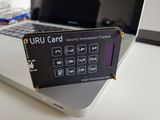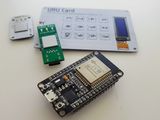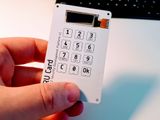URU Card - the new PCB design
Got a fresh batch of URU Card PCBs, and this time I used them to build a full hard shell case—just by stacking boards together. No 3D printing needed! I also switched to a PCB antenna (zero cost!) and prepped the layout for a future USB interface with the FT260 chip. It’s compact, wallet-friendly, and fully functional.



